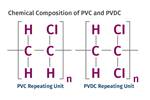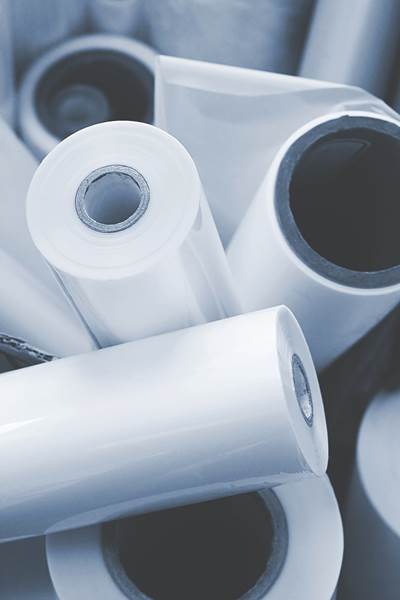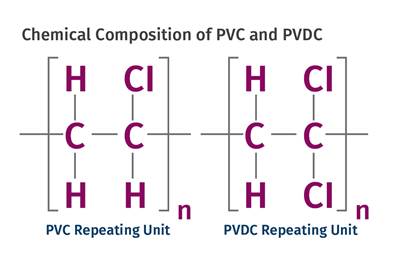Tracing the History of Polymeric Materials: Teflon
The accidental discovery of Teflon.
Some time ago, I was watching an online presentation by a physicist who was discussing the process of synthesizing heavy elements. These are the elements on the periodic table that are heavier than uranium. Many of the ones that appear in the row at the bottom of a periodic table were created “naturally” during the research into developing and testing the first atomic weapons. But as you go higher in atomic number, it becomes more difficult to produce these elements. The yields become very low, sometimes just a handful of atoms, and these decay rapidly, making it very difficult to figure out what exactly has been made.
The purpose and practical value of this type of research is not always evident to those who fund projects, so there is a need to justify it, which this physicist did toward the end of his talk by drawing an analogy to the space program. He recounted an argument made by one of the key people at NASA that while it may seem that going to the moon was not an example of money well spent, if we had not undertaken such a venture then we would never have invented Teflon. The idea, of course, is that big technological undertakings produce ancillary benefits along the way because they are needed to support the primary objective.
Teflon, of course, is a trade name for a material known as poly(tetrafluoroethylene) or PTFE. It has a very unusual set of properties, some of which are familiar to the general public. PTFE also gave rise to a wide range of other fluoropolymers. But as good as the argument of the NASA official sounds, it’s wrong. PTFE was discovered, accidentally as it turns out, in 1938, almost two decades before we even started thinking about sending rockets out of our atmosphere to orbit the Earth, and over 30 years before we landed a human being on the surface of the Moon.
Teflon gave rise to a wide range of other fluoropolymers.
The history of PTFE’s discovery appears similar to that of polyethylene. If you look at the chemistry of polyethylene and PTFE you can see some similarities. A polyethylene chain is a carbon backbone with hydrogen atoms populating all the locations that extend from these carbon atoms. In PTFE, all of the hydrogen atoms have been replaced with fluorine atoms, hence the name of the material. Like ethylene, tetrafluoroethylene is a gas at room temperature. Eric Fawcett and Reginald Gibson had accidentally polymerized polyethylene from ethylene gas during experiments that placed the ethylene gas under very high pressure. The discovery of PTFE followed a similar path, however in this case the creator of the material was not trying to create a new polymer, but simply trying to make a newly discovered refrigerant.
 Research has shown that PTFE’s low-friction surface is the only material that a gecko's feet cannot grip.
Research has shown that PTFE’s low-friction surface is the only material that a gecko's feet cannot grip.Roy Plunkett, the man credited with the discovery of PTFE, was a chemist hired by DuPont almost immediately after receiving his doctorate from Ohio State. He had done his undergraduate work at Manchester College where for at least part of the time his roommate was Paul Flory. Flory, you may recall, helped Wallace Carothers understand the chemical reaction associated with the polymerization of nylon materials and went on to do groundbreaking fundamental research in polymers for which he was awarded the 1974 Nobel Prize in Chemistry.
While Flory explored materials at a theoretical level, Plunkett spent his entire career in the world of practical endeavors at DuPont. His first project was an investigation of new chemistries for refrigerants. These took the form of chlorinated fluorocarbons, the very same CFCs that have since become the poster child for negative environmental impacts. It is easy to forget that before the advent of CFCs, refrigerants were based on chemistries such as ammonia and sulfur dioxide, which frequently poisoned food-industry workers as well as people fortunate enough to have refrigeration in their homes.
Plunkett had synthesized about 100 lb of tetrafluoroethylene and had stored the gas in small cylinders at very low temperatures in preparation for chlorination to make the new refrigerants. One day, while setting up one of the cylinders, Plunkett’s assistant, Jack Rebok discovered that when he opened the valve on the cylinder no gas came out. However, the cylinder had the same weight as a cylinder full of the gas. When Plunkett and Rebok unscrewed the valve from the cylinder they found a small amount of a white, waxy substance with some remarkable properties. The material exhibited a very high melting point, was chemically inert, and had an extremely low coefficient of friction. Cutting the cylinder open yielded a larger amount of the new substance. Analysis showed that under pressure, the tetrafluoroethylene had polymerized to PTFE.
Plunkett never had the opportunity to develop PTFE into the commercial product that ultimately became Teflon.(this family of fluoropolymers was spun off from DuPont in 2013 into the Chemours Company.) The commercialization was delayed until 1945 due to the high cost of manufacturing the polymer and the fact that its combination of properties made it an essential material for the military efforts of World War II. Specifically, PTFE solved a pressing problem associated with the purification of fissionable uranium. The uranium conversion process involves producing uranium hexafluoride (UF6), which is very corrosive and was presenting significant handling problems at Los Alamos and at Oak Ridge National Laboratories, where work on uranium enrichment was being done as part of the development of the first atomic weapons. PTFE had the chemical resistance necessary to prevent corrosion by the UF6.
Patents were filed for PTFE in 1941. By that time, Plunkett had been promoted to a different division of DuPont that produced the gasoline additive tetraethyl lead. This illustrates an interesting relationship between DuPont and General Motors during this period of time and produced an interesting intersection between Plunkett’s career and that of the chemist Thomas Midgely.
Midgely was a chemist who started working at General Motors in 1916 and in 1921 made the discovery that adding tetraethyl lead to gasoline prevented knocking in internal combustion engines. In 1923, GM created General Motors Chemical Company to supervise the production of tetraethyl lead by DuPont. In the late 1920s, Frigidaire was a division of General Motors. The research division at GM saw the need to develop a refrigerant that was a non-flammable and non-toxic alternative to the incumbents such as ammonia, sulfur dioxide, and propane.
They identified alkyl halides as the ideal materials since these compounds were volatile and chemically inert. Midgely was part of the team that synthesized the first CFC, dichlorodifluoromethane, now known as Freon 12. It was this compound that Plunkett was in the process of making when he discovered PTFE. His involvement with CFC’s would continue when he was assigned to direct Freon production at DuPont later in his career.

Discovery of PTFE eventually led to creation of a range of melt-processable fluoropolymers that allow for intricate injection molding, as well as extrusion and blow molding. (Photo: Performance Plastics Ltd.)
PTFE provided the platform for development of a wide variety of fluoropolymers that are more tractable than pure PTFE and can generally be melt processed. Some of these materials, such as fluorinated ethylene propylene (FEP), and perfluoro alkoxy (PFA), are molded at very demanding conditions. Copolymers with lower fluorine contents such as ethylene-tetrafluoroethylene (ETFE) and ethylene-chlorotrifluoroethylene (ECTFE) can be run at somewhat lower temperatures, and polyvinylidene fluoride (PVDF) can be molded at relatively mild temperatures due to its melting point of approximately 160 C (320 F).
PTFE also finds use as a filler in many other polymers to impart a lower coefficient of friction and improved wear properties.
Some of these materials are elastomers while others are relatively soft semi-rigid materials that are often filled with mineral or carbon. All of these materials benefit to various degrees from the presence of the fluorine, which contributes chemical resistance, combustion resistance, and low coefficient of friction. Many of these materials also provide excellent electrical insulating properties and are extensively used in electrical and electronics applications. PTFE also finds use as a filler in many other polymers to impart a lower coefficient of friction and improved wear properties.
The property for which PTFE is best known, its non-stick character, was not exploited commercially until the mid-1950s, when it was first applied to metal cookware. To this day, PTFE is the only known material that a gecko’s feet cannot adhere to and it is the subject of more patents than any other product that DuPont has ever developed. While Plunkett never was involved in commercialization of the polymer, his name is on most of these patents and he remains the best-known person associated with PTFE.
He continued to receive recognition for his serendipitous discovery for many years. Given what we know today, history may not look favorably on his later involvement with leaded gasoline and CFC refrigerants, but it is undeniable that the creation of PTFE and its derivative polymers has had a significant beneficial impact on the state of our modern technologies.
In our next installment, we will turn our attention to the continued development of the family of engineering thermoplastics with a discussion of another very influential material, polycarbonate.
ABOUT THE AUTHOR: Michael Sepe is an independent materials and processing consultant based in Sedona, Ariz., with clients throughout North America, Europe, and Asia. He has more than 45 years of experience in the plastics industry and assists clients with material selection, designing for manufacturability, process optimization, troubleshooting, and failure analysis. Contact: (928) 203-0408 •mike@thematerialanalyst.com
Related Content
Polymer Science for Those Who Work With Plastic — Part 1: The Repeat Unit
What are the basic building blocks of plastics and how do they affect the processing of that material and its potential applications in the real world? Meet the repeat unit.
Read MorePrices for PE, PS, PVC, PET Trending Flat; PP to Drop
Despite price increase nominations going into second quarter, it appeared there was potential for generally flat pricing with the exception of a major downward correction for PP.
Read MoreThe Fantasy and Reality of Raw Material Shelf Life: Part 2
For the vast majority of thermoplastics, the stability of the materials can be stated in years, not months. But there are exceptions where shelf life can be a serious issue.
Read MorePolymer Science for Those Who Work With Plastics: Molecular Weight — What It Is and Why It Matters
Molecular weight might seem like an abstract concept, but it plays a crucial role in determining the behavior of plastics during processing and in their final applications.
Read MoreRead Next
Tracing the History of Polymeric Materials: Cellophane
How—and when—cellulose-based chemistry led to the discovery of cellophane.
Read MoreTracing the History of Polymeric Materials: PVC & PVDC
How a class of materials based on chlorine chemistry became part of the landscape.
Read MoreTracing the History of Polymeric Materials: Nylon
The story of nylon, the first true engineering thermoplastic.
Read More
.jpg;width=70;height=70;mode=crop)




















